Try this travelling soap recipe for a soap for both body and hair. An all-natural rosemary soap, colored with natural orange juice. Rosemary, peppermint and tea tree essential oils give a wonderful scent to this soap. Filled with rosemary extract and nourishing oils for both skin and haircare, this soap bar is great as an all-purpose traveling soap!!
Table of Contents
Rosemary!
I cannot state this enough times, but I love rosemary. Probably it’s because it’s a herbal bush easy to keep in your garden. It has a great camphorous scent, similar to eucalyptus, and according to some scientific studies, is good for hair health and hair growth. It’s a great herb for hair products (see Medicinal Plants for Skin and Haircare).
This recipe has rosemary-infused olive oil and castor oil, as well as rosemary essential oil, mostly there for hair treatment.
Hair Treatment Ingredients
Although there are no extensive scientific studies that prove that castor oil promotes hair growth, folk medicine uses it as a hair thickener (see castor oil in Soap Making Oil Chart).
Still, it’s a nice foamy agent, making it easier to wash your hair. It’s an oil with comedogenic rating of 1, meaning that your skin absorbs it easily. Ricinoleic acid, the main active substance of castor oil, is anti-inflammatory and moisturizing. So, it checks for a great value-add for any soap, hair and body.
Peppermint and tea tree essential oils also help with anti-inflammatory, antiseptic and cleansing properties, helping with an oily scalp, acne issues, and in general, keeping your skin healthy and clean.
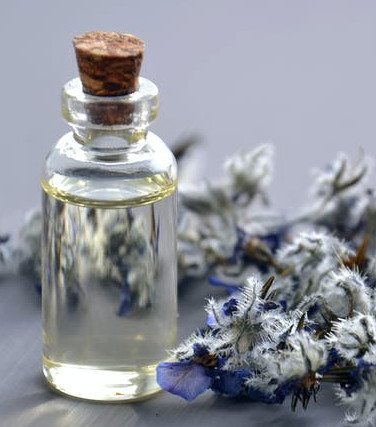
Let’s not forget that coconut oil and olive oil will contribute to cleansing and conditioning properties to both skin and hair.
Orange Juice as Natural Colorant
I’ve read somewhere on the net that orange juice is a natural yellow colorant for soap. And also that it lowers soap pH, something desirable for hair products, as your hair and scalp only does well with 5.5 pH. So I’ve decided to have a go with this natural colorant.
I’ve added it as water content to the lye water, which is where any ingredient gets the most of the chemical change from lye. The water got a nasty scent similar to ammonia, which is a signal of plant matter being “destroyed” by lye water. Fortunatelly, most of this scent has gone away with soap curing.
What I could conclude from this soap recipe was that orange juice doesn’t color your soap with yellow. Instead you get a dark creamy – still pretty – color. As the orange juice chemical structure is pretty changed with the lye water, it also doesn’t reduce your soap pH. Pretty much like apple cider or other natural acidic product, as I’ve read about later on.

In fact, soap pH is high by nature, and is part of what makes it a good product. It doesn’t need any preservative to be bacteria and fungus free, because the high pH does most of the work. Soap with a low pH is a sort of a Frankenstein. So, I’ll simply disregard, from now onwards, any handmade soap recipe that attempts at reducing soap pH. You live and learn, right?
Travelling Soap Recipe
With a rich choice of oils and essential oils, enriched with rosemary extract, this soap bar is great for your skin and hair, making it perfect for travelling, especially if you are camping. It’s zero-waste, light in weight and a body, hair and hands wash all in one bar.
It’s also solid and you won’t have to worry of shampoo slipped all over your backpack. Just make sure you keep your soap bar dry and airy most of the time. Avoid contact with water when is not being used to prevent it to go too soft.
Enjoy your travelling soap recipe!!
Be Careful Using Soap In Your Hair Long Term
Bear in mind that you shouldn’t use soap with high pH in long term in your hair, at least not without an acidic hair rinse. I have covered the topic of using soap to wash your hair in the Syndet Shampoo Bar For Oily Hair post.
A hair rinse with vinegar (usually, mild apple cider vinegar) is advised to be used in order to lower the pH and close hair cuticles. I leave here a hair rinse recipe from Healthline website. In the alternative, you can also choose to buy an all-natural hair rinse from Apple Valley. I didn’t have created a recipe myself as I don’t really like to use vinegar on my hair.
So you can use this soap bar, made with oils that bring benefits to your scalp and hair, to wash your hair, given that you use the hair rinse afterwards. I personally prefer to use this shampoo bar, as I’ve tried soap and didn’t quite adapt to it.
I hope you enjoy this recipe and your soaps!!! Don’t forget to this soap bar on your travel experiences!
Find Where to Buy Handmade Rosemary Soap
If you’re not yet ready to try to make this recipe at home, but you still wish to enjoy natural soaps, you can find handmade rosemary soap in the following links:
- Lavender and Rosemary Coconut Bar
- Rosemary Mint Shampoo Body Bar
- Rosemary Mint Soap
- Other Soaps – Apple Valley Natural Soap Reviews
How To Use This Soap
In the shower or bath, wet your hands and rub your soap in them to create a lather. Wash your hands first, then repeat the process and apply soap to your whole body and hair using the soap directly and your hands. Rinse hands, body and hair abundantly. Use an acidic hair rinse in your hair afterwards. Also wash your soap from lather before placing it in your soap dish or bag saver.
Washcloths and sponges should be avoided. Avoid washing your intimate zone and your hair, soap pH in not adequate for those parts of your body. Avoid eye contact with soap to prevent stinging. Make a patch test before using your soap. Stop using your soap if you feel any immediate adverse reaction in your skin (red skin, rashes, itching).
To take best advantage of your handmade soap (made by yourself or store-bougth), read How Do You Use Handmade Soap?
Related Posts
- Vegetable oils: Oil Properties For Soap Making
- Essential oils: Best Essential Oils for Soap Making
- Colorants: How To Color Your Soap With Kitchen Ingredients
- Cold Process Tutorial Guide: How Do You Make Cold Process Soap?
- Cold Process Soap Recipes: Free Cold Process Soap Recipes
- Beginner Recipes: Soap Recipes for Beginners
Watch This Video Before Starting Your Recipe
Equipment
Ingredients
Lye Water
- 69 g lye (100% sodium hydroxide)
- 159 g orange juice squeezed oranges
Oils
- 135 g refined or organic coconut oil
- 135 g RSPO palm oil
- 108 g extra virgin olive oil rosemary-infused
- 108 g castor oil rosemary-infused
After Trace Ingredients
- 8 drops grapefruit seed extract (GSE) (anti-oxidant)
- 14 ml essential oils blend
- alcohol or witch hazel to sprinkle
Essential Oils Blend
- 1.5 tsp essential oil rosemary
- 0.5 tsp essential oil peppermint
- 0.5 tsp essential oil tea tree
- 0,5 tsp essential oil benzoin
Instructions
Get Ready!
- Wear goggles and gloves! Look at “Safety Recommendations” in How to Make Soap From Scratch
- Watch the video above or read the post How To Make Soap by Cold Process Step-by-Step for instructions on cold process. These are generic steps for all recipes.
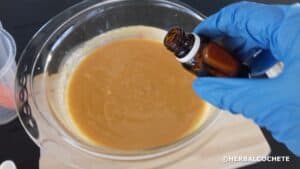
- Prepare your infused oils using the liquid oils and your dried rosemary. See how to do it in How To Make Infused Oil
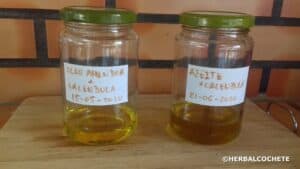
- Assemble everything: ingredients, equipment, safety equipment. Prepare your workstations. Measure all the ingredients. Don’t start the recipe without having everything ready!
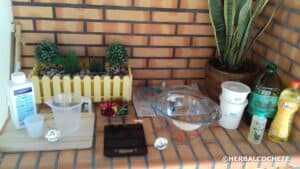
Heat the Oils
- Heat the rosemary-infused oils and solid oils until the later are completely melted. Up to around 50ºC (if there is any remaining solid oils, let the heat melt them)

Make Lye Water
- Make the lye solution according to How To Make Lye Water, using the orange juice as water. Add the lye to the orange juice and mix well until the vapors start to dissipate. The lye water will turn dark orange.
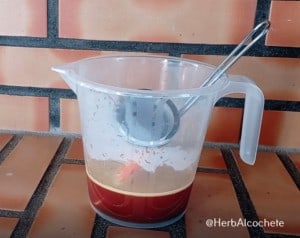
Make the Soap Batter
- Strain the lye water to remove any bits of orange and avoid any lye crystals in your soap.
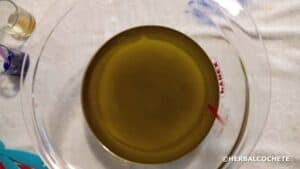
- Use as a target temperature 38ºC for the oil-solution mixture. If necessary, you can reheat the oils, but not the lye solution. Reach light trace with the immersion blender, as this soap tend to harden very fast.
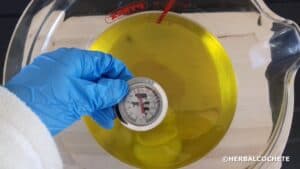
Add After Trace Ingredients
- Add essential oils blend and the extract to the soap batter. Mix well with a spoon or spatula
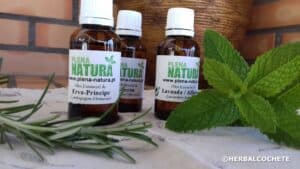
Molding and Curing
- Pour the soap batter into soap molds. Sprinkle the top of the soaps with alcohol to avoid soda ash.
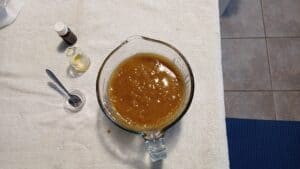
- Let the soap bars set for 48 hours, then unmold. Let the bars cure for 4 to 6 weeks. See How To Cure Soap.
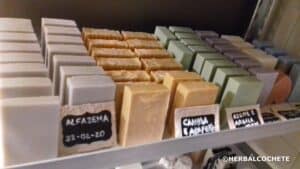
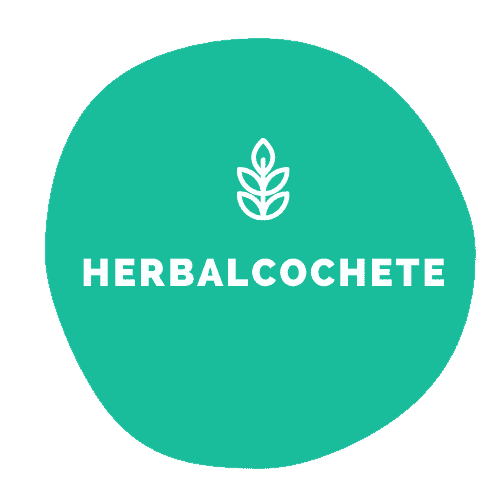
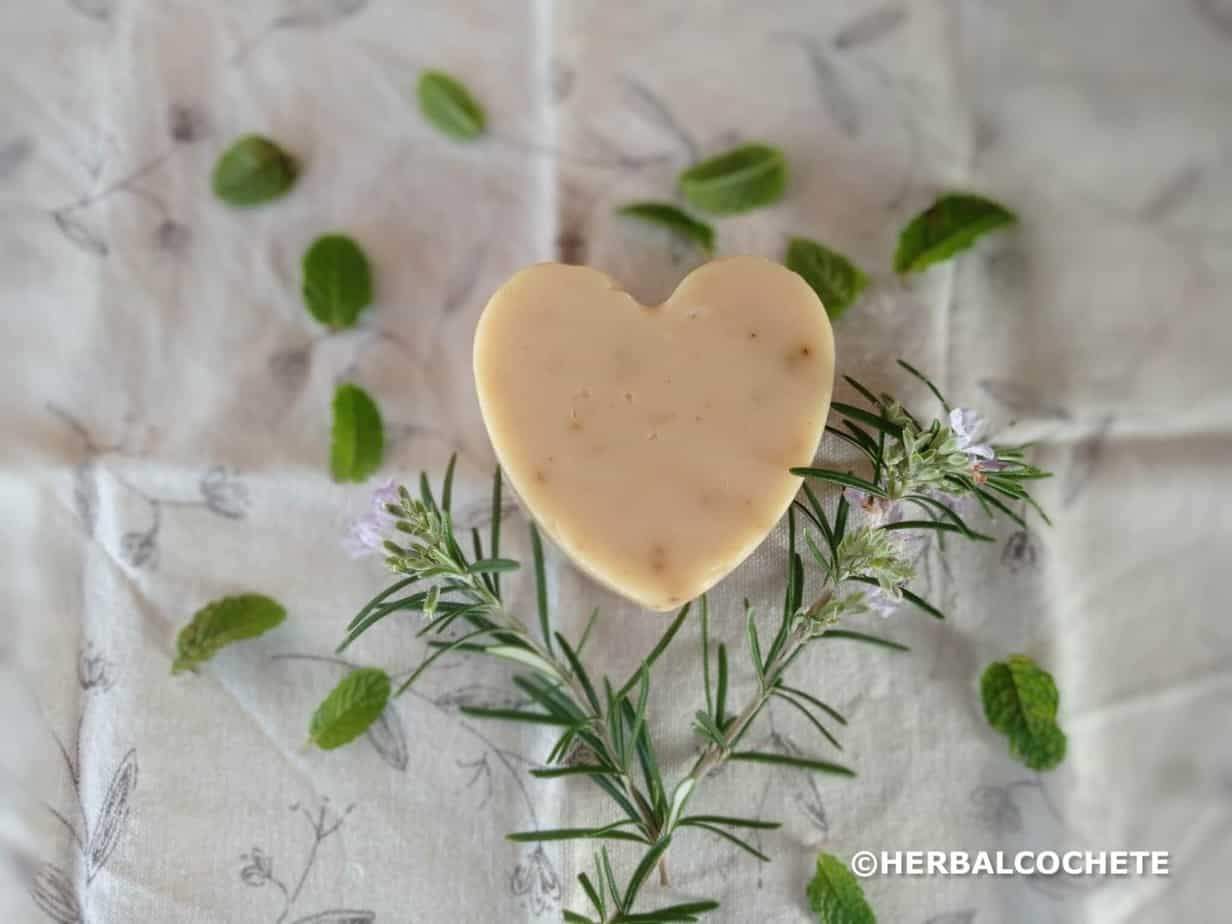

This looks amazing. Lately, I have really gotten into homemade products like soap, lotions, and other things. This soap would be amazing in reference to the fragrance it has to have, and I am definitely going to give it a try. I have saved your site for future reference. There is a lot of great information here. Thanks for sharing.
Hello AL. thanks for your nice comment.
I am glad that I can help with information about natural cosmetics, that’s my main objective with this blog. Feel free to come back any time, and if you wish, subscribe to the mailing list so you can be notified whenever I post something new.
Cheers,
Sofia
Do people actually do this? I mean soap is not expensive so I feel like everyone and anyone can buy soap whenever they need it. I will be sure to share this article with friends and family. I am surrounded by a lot of people who love traveling so I am sure that they will appreciate this post
Hello Daniel and thank for your comment.
Of course people can buy soap. They can also make they own soap. Making soap at home is really fun for me, I bet there are other people out there thinking the same.
See it like making food: you may prefer to go to a restaurant and purchase a meal (= as buying soap), or you may prefer to stay at home, get your ingredients and make the meal yourself (= make soap at home). Some people do prefer to cook at home, despite the work they have in making the meal.
But whether you wish to buy soap or make your own, you will always find a post in this blog helping you.
Thanks for sharing the post among your friends.
Cheers,
Sofia